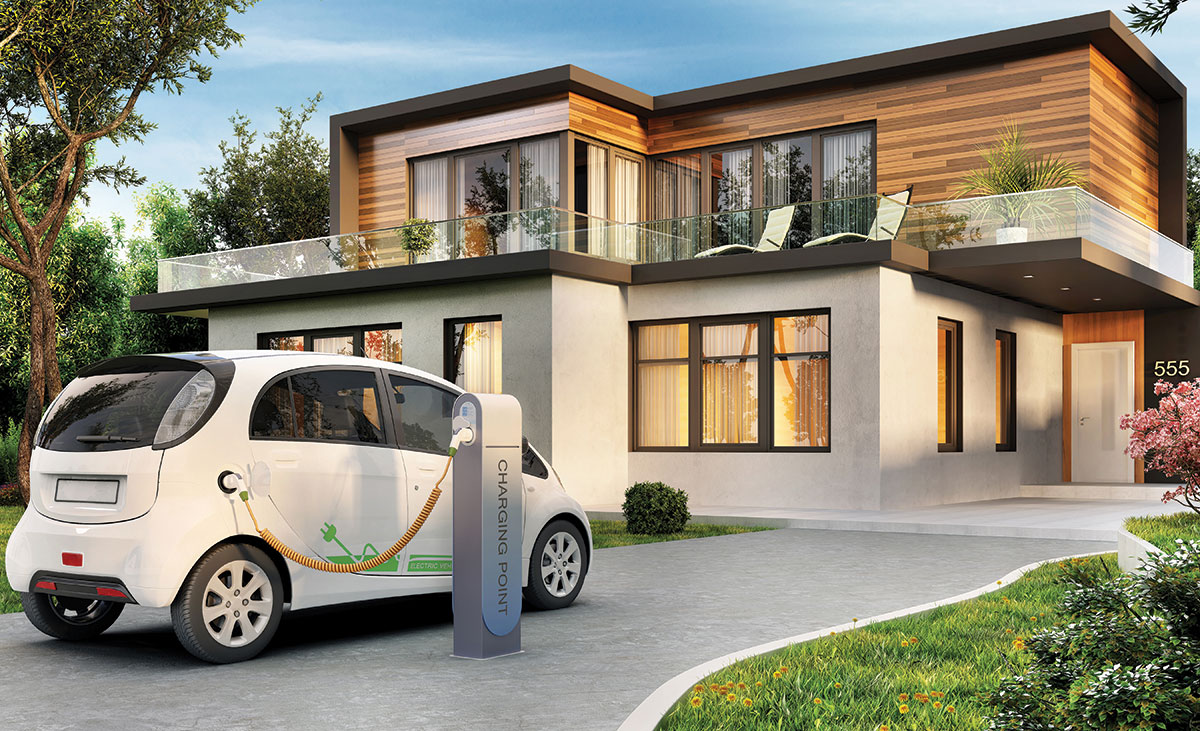Question
Does UL Certify (List) electric vehicle (EV) chargers that allow an EV owner to back-feed the electrical system on their house and how do I identify one?
Answer
Yes, UL Certifies (Lists) EV chargers that can be used to back-feed a house electrical system under the product category Electric Vehicle Charging System Equipment with Bidirectional Capability (FFTN) in accordance with UL 9741, Outline of Investigation for Power Export Equipment (EVPE). This category covers electric vehicle (EV) charging system equipment with bidirectional capability that charges an EV through a dc power transfer to the vehicle and is intended to accept ac (if the inverter is on the vehicle) or dc (if the inverter is in the charger) such that power exported from the EV can be distributed to the grid, a premise or a load. Additionally, this equipment may consist of a receptacle bank or other specific load that is powered directly from the vehicle. This equipment is intended to be installed in accordance with the NFPA 70®, National Electrical Code® (NEC®).
When used as a charger, this equipment transfers power to the EV at a maximum 1000 V dc to recharge an EV battery in accordance with Article 625 of the NEC. The equipment is connected to the EV by a flexible cable and connector. When exporting power from the EV to back-feed a house, the inverter is intended for installation in accordance with the requirements for Interactive Systems in NEC 625.48.
Equipment covered under this category includes unidirectional EV power stations, bi-directional chargers without an inverter, bidirectional chargers with an inverter that is classed as utility interactive, grid support utility interactive, standalone or multimode. Utility interactive and grid support utility interactive devices operate in parallel with the electric utility grid. Standalone devices operate independently of the utility grid. Multimode devices can operate as either standalone devices (utility independent) or as utility interactive/grid support utility interactive devices, or both.
These EV chargers can be identified by the UL Certification Mark with one of the following product identities appearing on the product:
- Bidirectional Electric Vehicle Charger with Grid Support Utility Interactive Inverter
- Bidirectional Electric Vehicle Charger with Utility Interactive Inverter
- Bidirectional Electric Vehicle Charger with Special Purpose Utility Interactive Inverter
- Bidirectional Electric Vehicle Charger with Stand-alone Inverter
- Bidirectional Electric Vehicle Charger with Multimode Inverter
- Bidirectional Electric Vehicle Charger
- EV Power Stations
The UL guide information and Certifications (Listings) can be viewed on UL Product iQTM at UL.com/piq; enter FFTN at the search field.
Question
I was inspecting a Certified (Listed) exit sign that did not have a battery pack and was not connected to the emergency system. I was told that this is a hybrid exit sign. What is a hybrid exit sign?
Answer
A hybrid exit sign includes a photoluminescent panel and LEDs that illuminate the panel to “charge it” instead of a battery backup powered lighting source. UL Certifies (Lists) this type of exit sign under the product category Emergency Lighting and Power Equipment (FTBR). This category also includes exit signs using a battery as their emergency power source. Exit signs that are photoluminescent only are Certified (Listed) under the product category Self-Luminous and Photoluminescent Exit Signs (FWBX). The UL guide information and Certifications (Listings) for hybrid exit signs and photoluminescent exit signs can be viewed on UL Product iQ at UL.com/piq; enter FTBR or FWBX at the search field.
Question
The 2020 NEC has a new Article 337 Type P cable. Is Type P cable shipboard cable? Does UL Certify (List) this cable?
Answer
While Type P cable is a common industry term for cables insulated with material designation P – commonly appearing on shipboard cable using cross-linked polyolefin insulation – not all of these cables meet the requirements of the NEC for this cable type. UL Certifies (Lists) Type P cable to UL 1309A, Outline of Investigation- Cable for Use in Mobile Installations, to meet the NEC requirements for this cable type under the product category Cable for Use in Mobile Installations (CYLD).
The CYLD category covers cables up through 2000 volts that can be used in accordance with Article 337 of the NEC on mobile installations such as land drilling rigs or other similar equipment and for industrial installations under engineering supervision. Cables are eligible to be marked with the designation “Type P.” Cable marked Type P is a cross-linked polyolefin insulated, single or multi-conductor cable, with an equipment grounding conductor, overall nonmetallic jacket and may be armored and sheathed or unarmored. The UL guide information and Certifications (Listings) for Type P cable can be viewed on UL Product iQ at UL.com/piq; enter CYLD at the search field.














Find Us on Socials